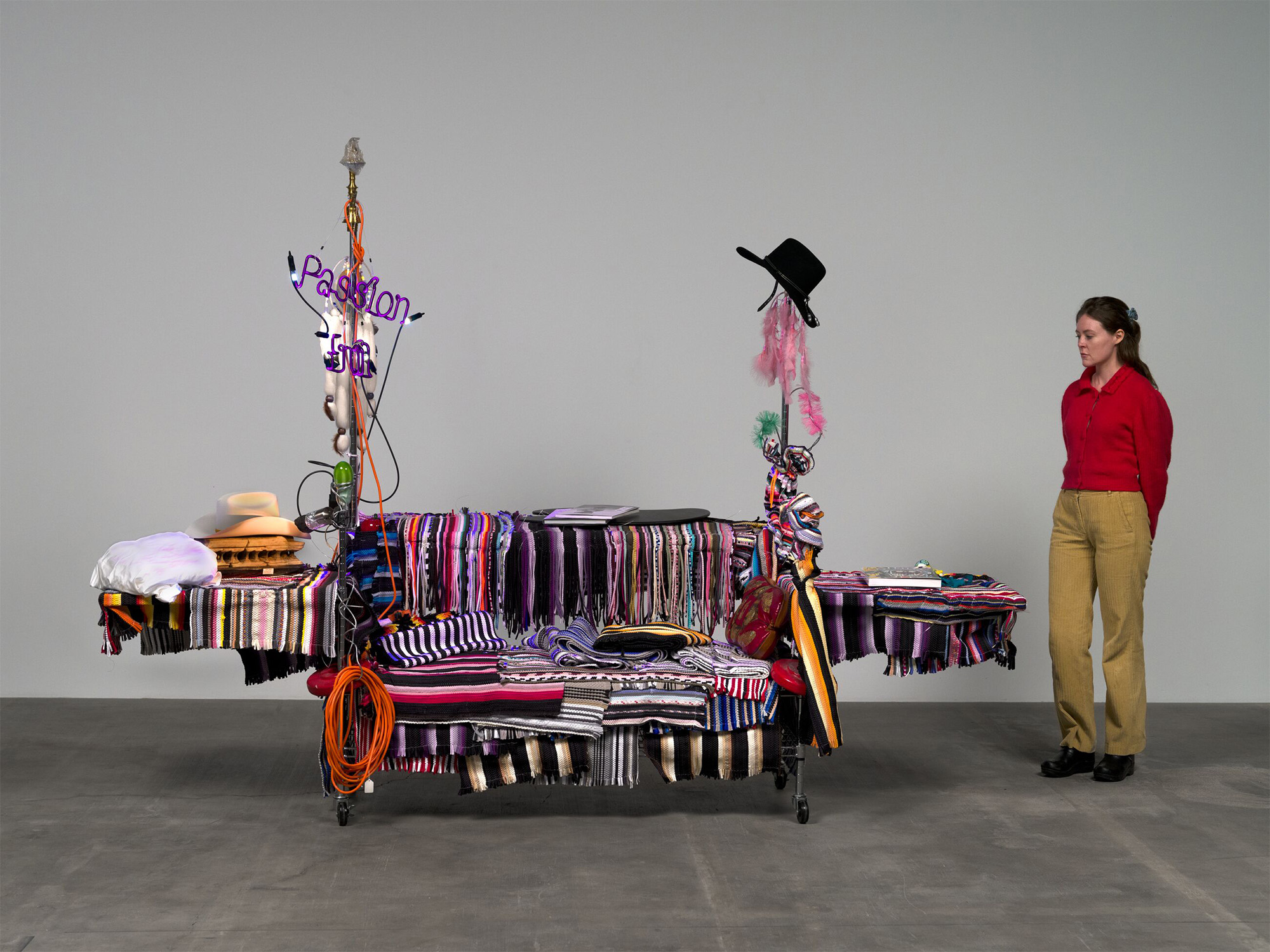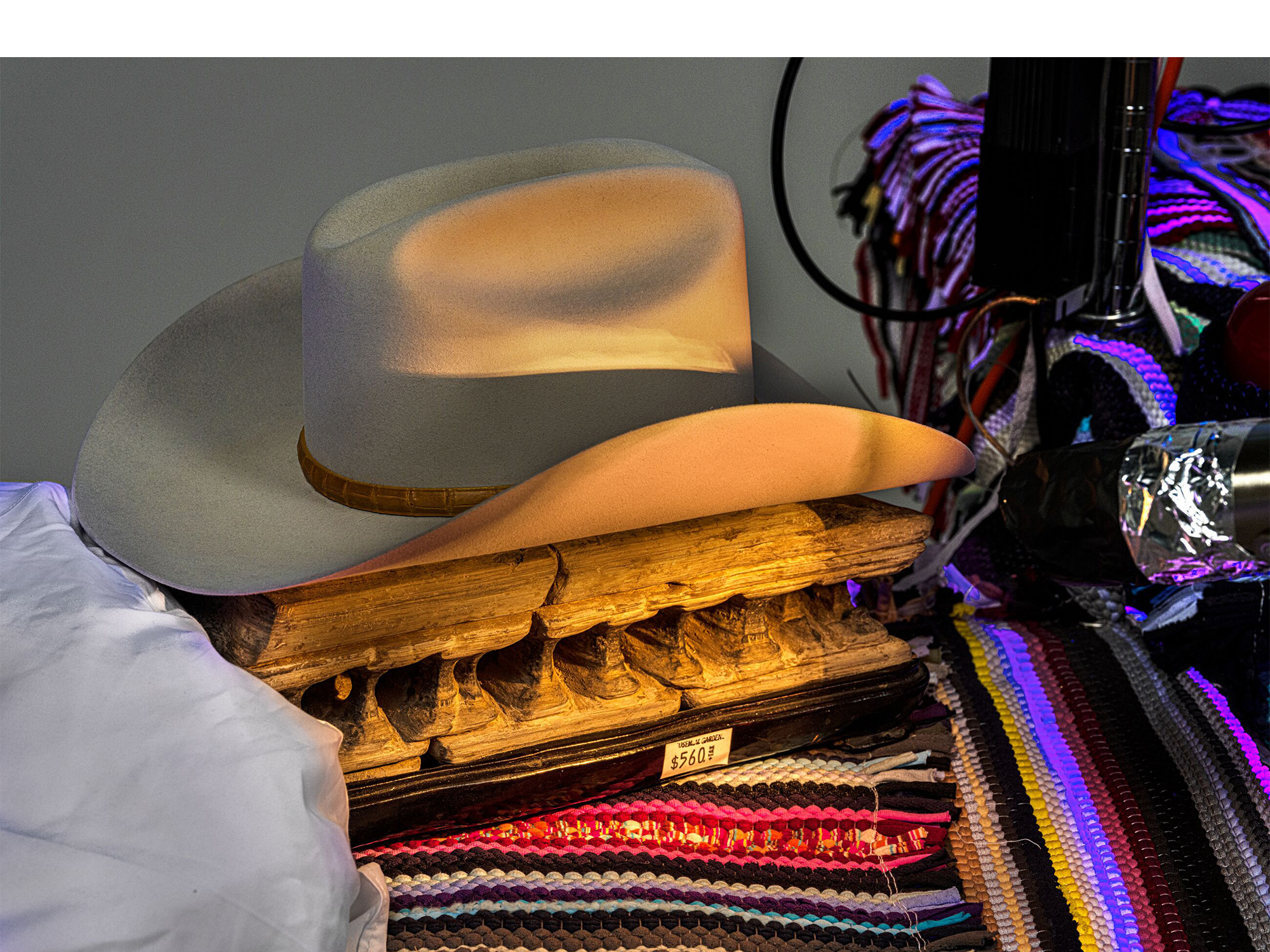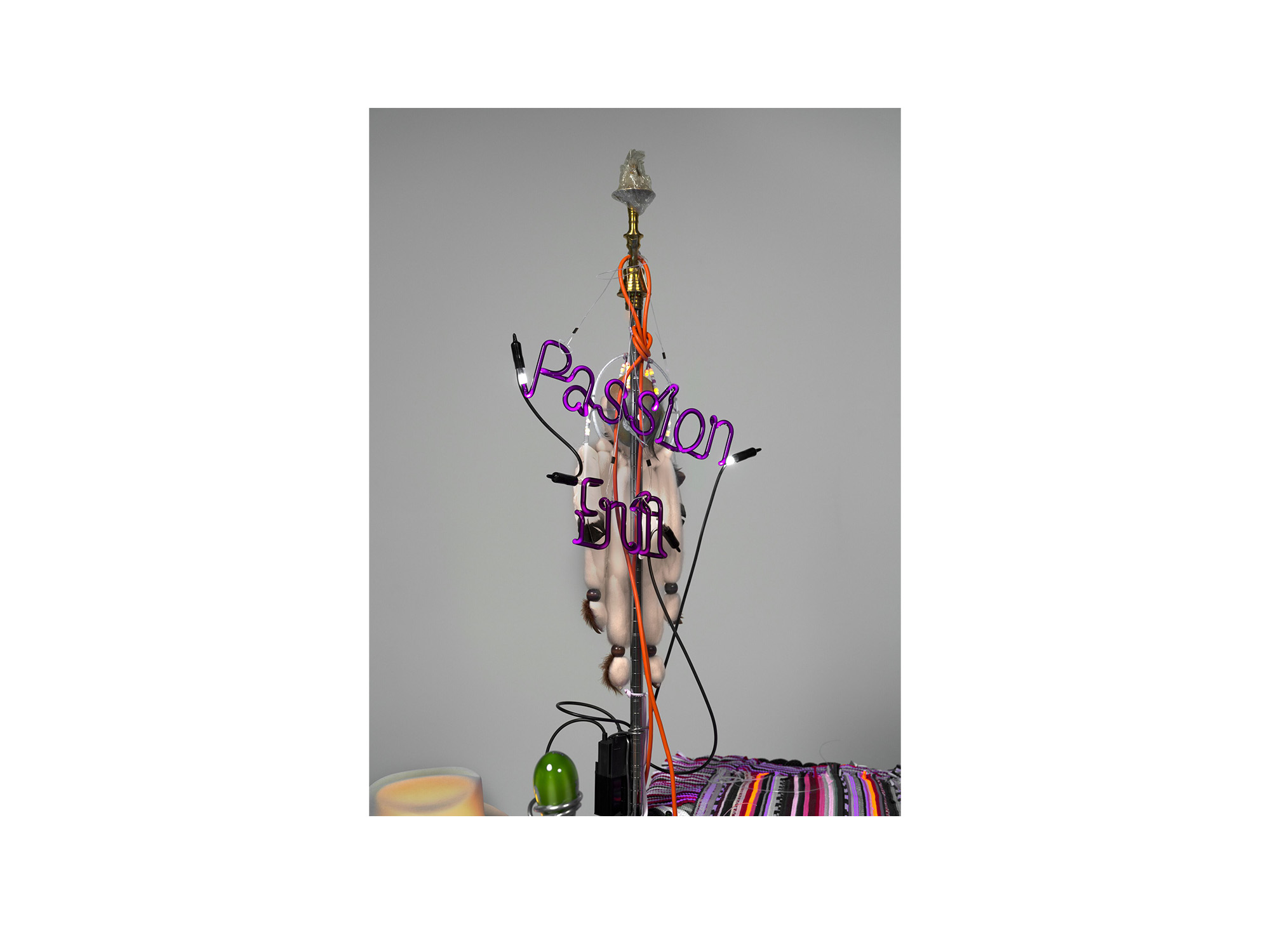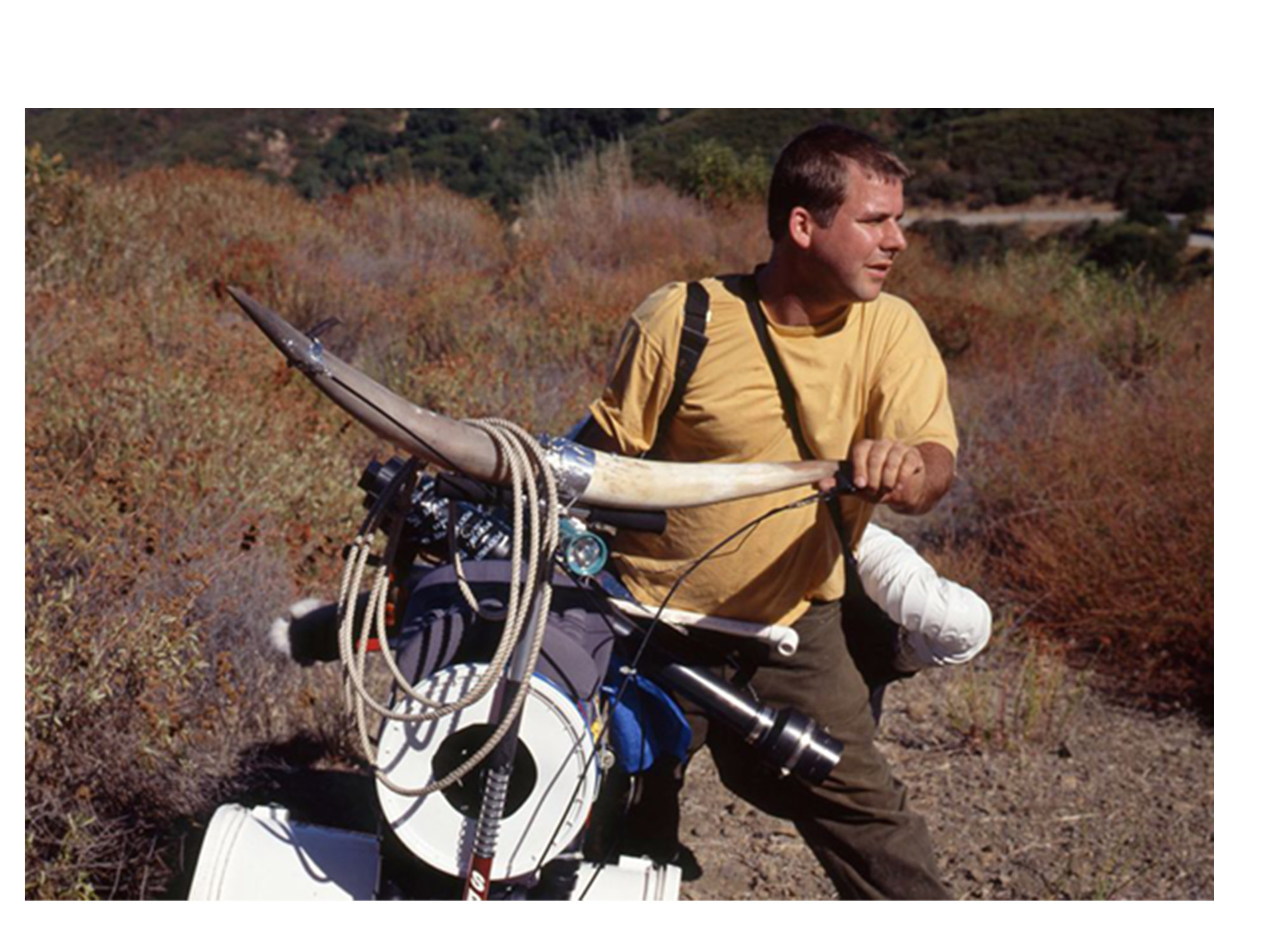Jason Rhoades
Item #20, Passion Fruit
Item #20, Passion Fruit
Jason Rhoades
Item #20, Passion Fruit
2005
Fake Metro brand Super Erecta Shelf® wire shelving unit, black light neon phrase, 120 V Transformer, GTO cable, Egyptian Hookah pipe (brass), Chinese rag rugs, bever-felt cowboy hat, pipe cleaners, glass fruit, camel saddle style footstool cushion, dream catchers, orange extension cord, pipe cleaners, leather palette shaped blotter, Chinese scholar stone, spotlight, Egyptian cotton, scaffolding counter weight, monofilament, monofilament crimps, Books: The Spirit of Gongshi, Scholars’ Rocks in Ancient China, Basquiat
226 x 314 x 138 cm / 89 x 123 ⅝ x 54 ⅜ in








 Jason Rhoades (1965 – 2006) is known for monumental, room-filling installations. These idiosyncratic sculptures incorporate a wide range of objects including products of mass culture combined with hand-made items and biographical references. Drawing on the history of assemblage, Rhoades imbues his materials with powerful formal, narrative and allegorical links, encouraging viewers to connect and interpret the associative chains. Rhoades often drew inspiration from the city of Los Angeles where he lived and worked as well as The Great American West, informed by his rural upbringing in Northern California. His work has been exhibited internationally since the early 1990s.
Jason Rhoades (1965 – 2006) is known for monumental, room-filling installations. These idiosyncratic sculptures incorporate a wide range of objects including products of mass culture combined with hand-made items and biographical references. Drawing on the history of assemblage, Rhoades imbues his materials with powerful formal, narrative and allegorical links, encouraging viewers to connect and interpret the associative chains. Rhoades often drew inspiration from the city of Los Angeles where he lived and worked as well as The Great American West, informed by his rural upbringing in Northern California. His work has been exhibited internationally since the early 1990s.